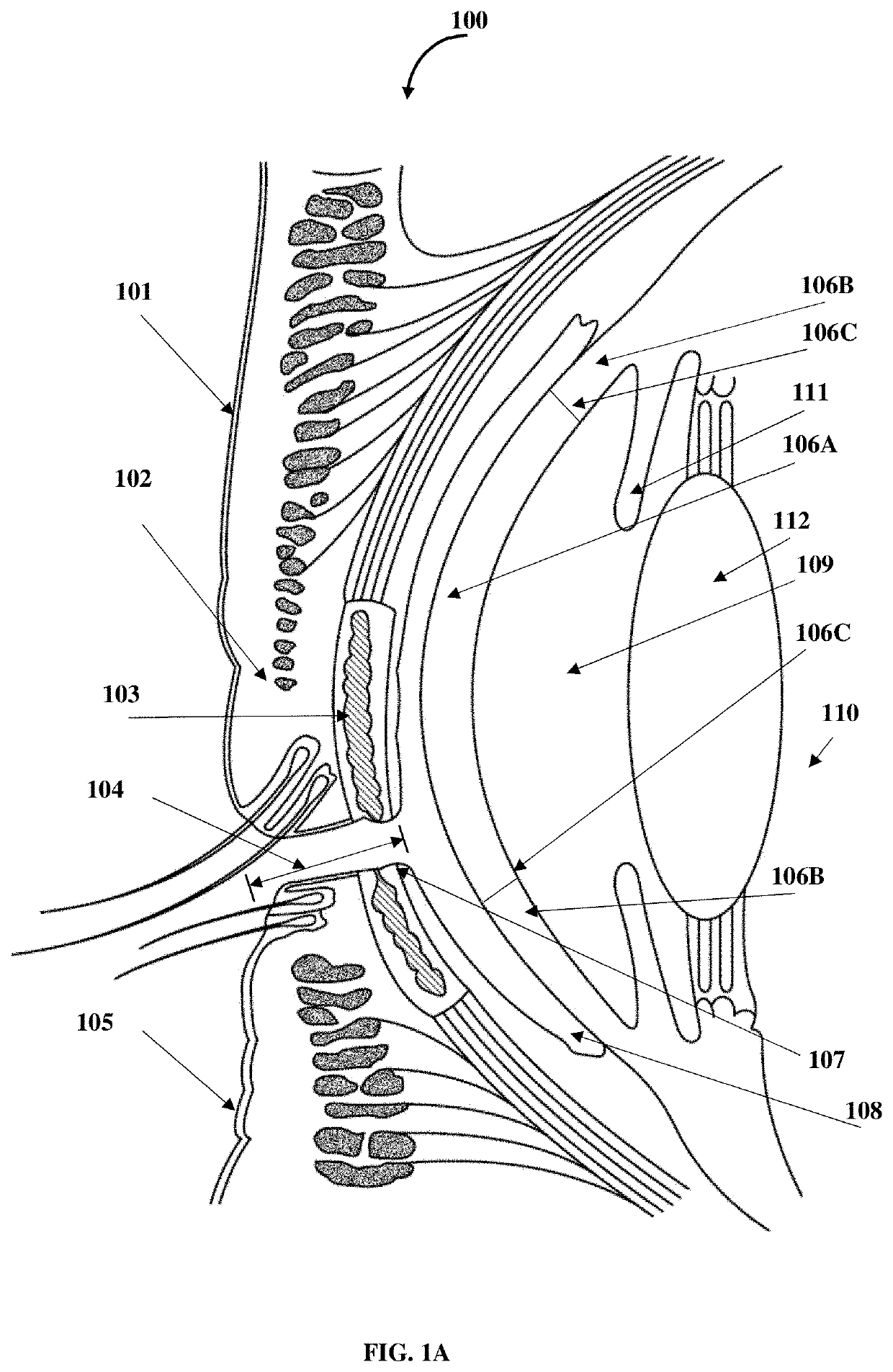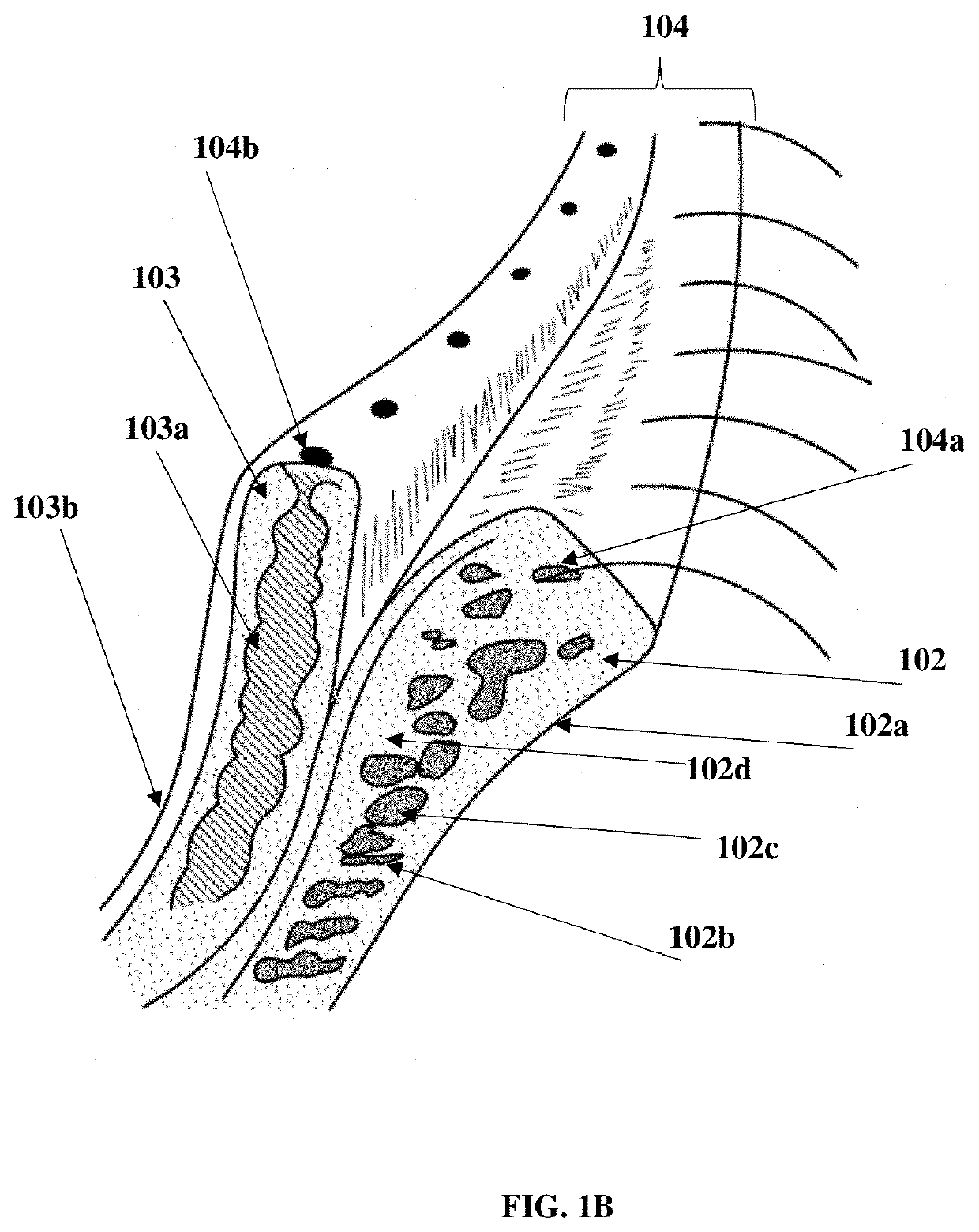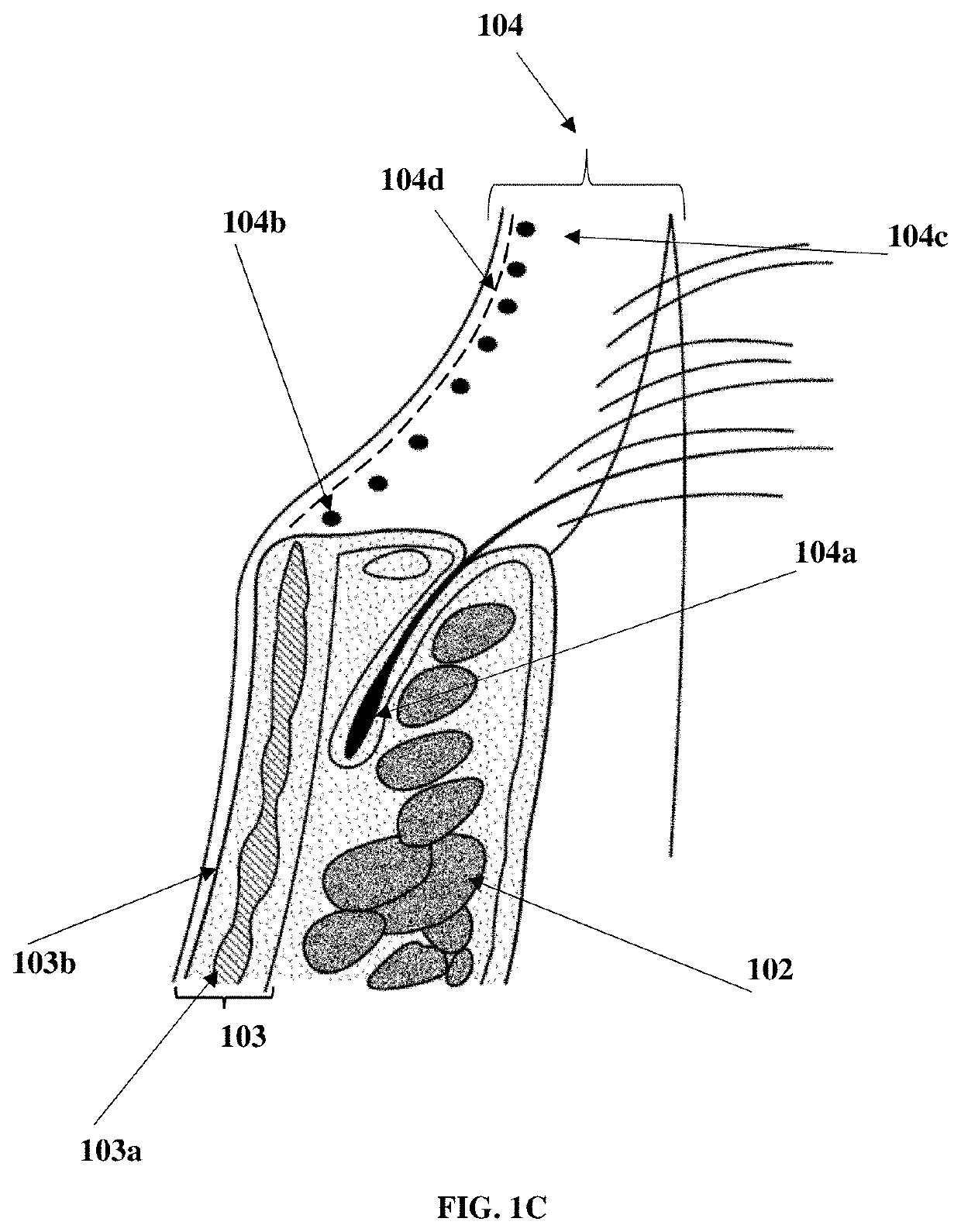Compositions and methods for the treatment of anterior blepharitis and posterior blepharitis
a technology for blepharitis and compositions, applied in the direction of drug compositions, oil/fat/waxes non-active ingredients, sense disorders, etc., can solve the problems of limited success of current methods for treating this condition, limited success of such treatments, etc., and achieve the effect of limited bioavailability
- Summary
- Abstract
- Description
- Claims
- Application Information
AI Technical Summary
Benefits of technology
Problems solved by technology
Method used
Image
Examples
example 1
Method:
[0131]Ingredients of Phase A (water, Ivermectin, and disodium EDTA) were added and stirred (until dissolution). Phase B (slurry of xanthan gum in propanediol) was added to the mixture of Phase A under low shear until a homogenous gel was formed. The homogenous gel was heated to 80° C.
[0132]Ingredients of Phase C (glyceryl stearate citrate, cetearyl alcohol, bis-stearyl ethylenediamine, neopentyl glycol, stearyl hydrogenated dimer dilinoleate copolymer) were combined and heated to 80° C. Ingredients of Phase D (dimethicone 350 cps and dimethicone 500 cps, Ammonium and Sodium Acrylates Copolymer) were combined, and added to Phase C mixture, and stirred until homogenous.
[0133]The mixture obtained by adding Phase C and D were added to the mixture obtained by added Phase A and B and stirred vigorously until homogenous.
[0134]The mixture was allowed to cool below 40° C. and then, ingredients of Phase E (phenoxyethanol, caprylyl glycol, Tocopherol-D-alpha 70% Qs pH adjuster) were add...
example 2
Method:
[0136]Ingredients of Phase A (deionized water and veegum) were mixed with high shear mixing until smooth.
[0137]Phase B (triethanolamine and propylene glycol) was added to the mixture of Phase A and mixed until uniform.
[0138]Phase C (xanthan gum, Tocopherol-D-alpha 70%) was added to the above mixture of Phase A and B, and then mixed until uniform using high shear mixing.
[0139]Phase D (stearic acid, glyceryl stearate, oleyl alcohol) and Phase E (dimethicone 350 CPS, dimethicone 1000 CPS) were melted to 75° C.±5° C. in separate containers and then mixed with high shear mixing.
[0140]The mixture of Phases D, E and the mixture Phases A, B, C were mixed together with high shear and cooled to 35° C.±5° C.
[0141]Phase F (Ivermectin sterile micronized) was then added to the above mixture, mixed completely and stored in sterile containers.
[0142]The ingredients and amounts used for Example 2 are summarized in Table 2.
TABLE 2PHASE% W / WINGREDIENTA72.5DEIONIZED WATERA1.0VEEGUMB1.40TRIETHANOL...
example 3
Method:
[0143]Ingredients of Phase A (deionized water and veegum) were mixed with high shear mixing until smooth.
[0144]Phase B (triethanolamine and propylene glycol) was added to the mixture of Phase A and mixed until uniform.
[0145]Phase C (xanthan gum, Tocopherol-D-alpha 70%) was added to the above mixture of Phase A and B, and then mixed until uniform using high shear mixing.
[0146]Phase D (stearic acid, glyceryl stearate, oleyl alcohol) and Phase E (carnauba wax, white bees wax) were melted to 75° C.±5° C. in separate containers and then, mixed with high shear mixing.
[0147]The mixture of Phases D, E and the mixture Phases A, B, C were mixed together with high shear and cooled to 35° C.±5° C.
[0148]Phase F (Ivermectin sterile micronized) was then added to the above mixture, mixed completely and stored in sterile containers.
[0149]The ingredients and amounts used for Example 3 are summarized in Table 3.
TABLE 3PHASE% W / WINGREDIENTA72.5DEIONIZED WATERA1.0VEEGUMB1.40TRIETHANOLAMINEB10.00P...
PUM
| Property | Measurement | Unit |
|---|---|---|
| weight | aaaaa | aaaaa |
| resistance | aaaaa | aaaaa |
| pH | aaaaa | aaaaa |
Abstract
Description
Claims
Application Information
 Login to View More
Login to View More - R&D
- Intellectual Property
- Life Sciences
- Materials
- Tech Scout
- Unparalleled Data Quality
- Higher Quality Content
- 60% Fewer Hallucinations
Browse by: Latest US Patents, China's latest patents, Technical Efficacy Thesaurus, Application Domain, Technology Topic, Popular Technical Reports.
© 2025 PatSnap. All rights reserved.Legal|Privacy policy|Modern Slavery Act Transparency Statement|Sitemap|About US| Contact US: help@patsnap.com



